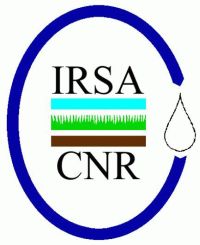
Background
Brochure download
The Mediterranean is one of the most crowded seas in the world in terms of traffic. Even if it covers only 0.7% of the total sea-water surface in the world, it hosts 30% of the overall international maritime traffic. Sea pollution by oil, hazardous and noxious substances can happen at any time and in any place, especially along the main maritime routes due to technological and natural hazards and during the loading and unloading vessels’ operation in the sea-terminals, where the likelihood of marine environment pollution is the highest. On average, there are annually 60 accidents on the Mediterranean, out of which 15 result from maritime accidents of tankers transporting petroleum or chemicals. In this context, the Adriatic Sea is no exception, especially since it represents a narrow and shallow basin along across which petroleum transport is directed towards transit ports mainly situated in the northern part of the Adriatic. According to statistical data, tankers sail into the Adriatic Sea almost 5.000 times per year, out of which 3.500 times into the port of Trieste alone, where more than half of the total petroleum cargo designated for the Adriatic maritime route is unloaded yearly. To date, numerous studies shows the exposure of the Adriatic Sea to accidents: they show that the pressure from the merchant navy is higher here than in areas with heavy maritime traffic. Over the past 15 years, a total of 174 accidents has been recorded on the Adriatic, none of which was of catastrophic proportions, but nevertheless some of the accidents have made a mark on the maritime traffic & served as a warning that a joint cooperation at all levels is necessary for a prompt and efficient response. One of those accidents took place in 2008 and involved a Turkish vessel UND ADRIYATIK. It ended without serious environmental consequences, but this was more due to a series of fortunate circumstances than the successful performance of the Adriatic response teams. Lack of preparedness of regions and counties on the Adriatic was evident not only in the insufficient equipment and poorly trained personnel, but also in the delayed deployment to the site of the accident which can be attributed to the poor coordination between the competent bodies involved in the implementation of contingency plans on the Adriatic, which in turn stems from the fact that response procedures within contingency plans both at the national and regional level are not harmonized. The basic problems in the cross-border area lie in the facts that the general and specific regulations are not harmonized and that response teams for contingencies at sea are not adequately trained nor prepared. Furthermore, only 4 out of 6 Adriatic states have adopted their own national contingency plans in event of accidental sea pollution by oil, hazardous & noxious substances, while regional contingency plans are practically non-existent. Finally, education and training for the staff involved in the national or regional response mechanism is demanding basis of any good and efficient contingency planning at sea.


